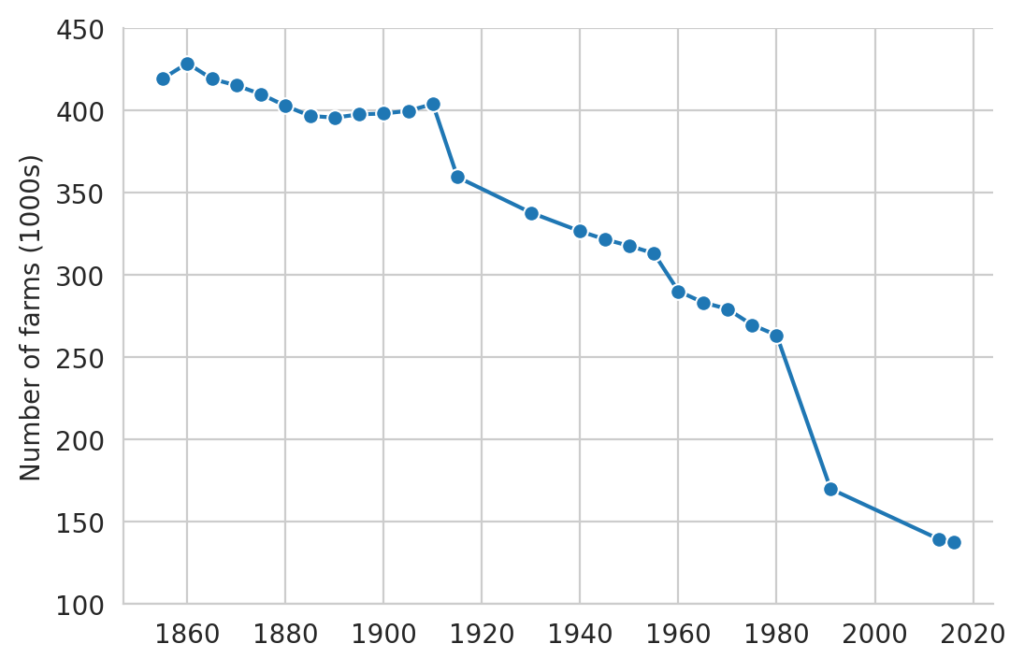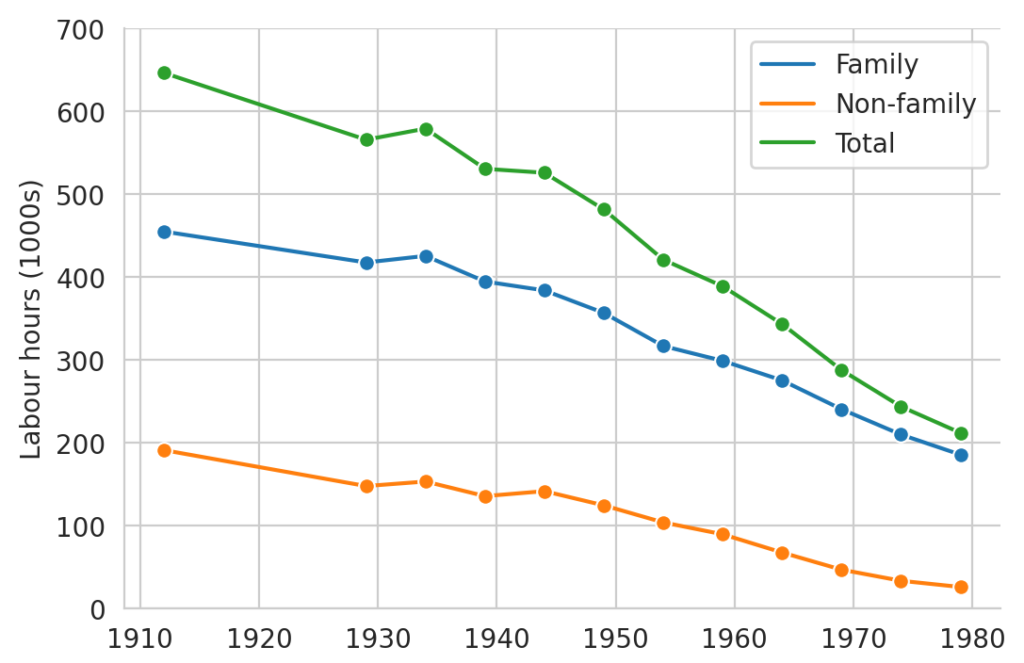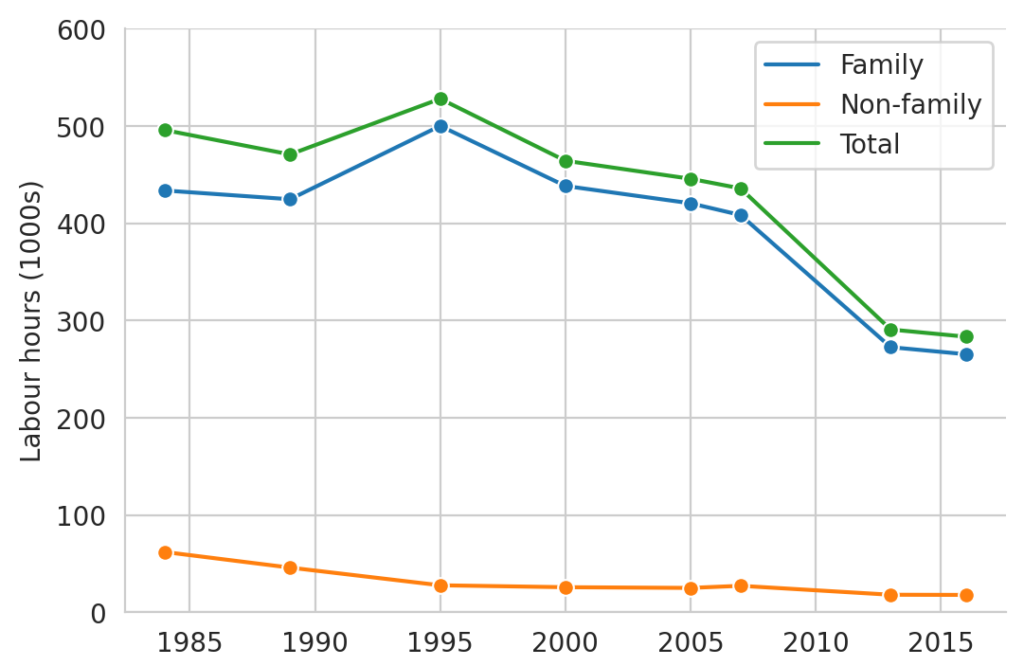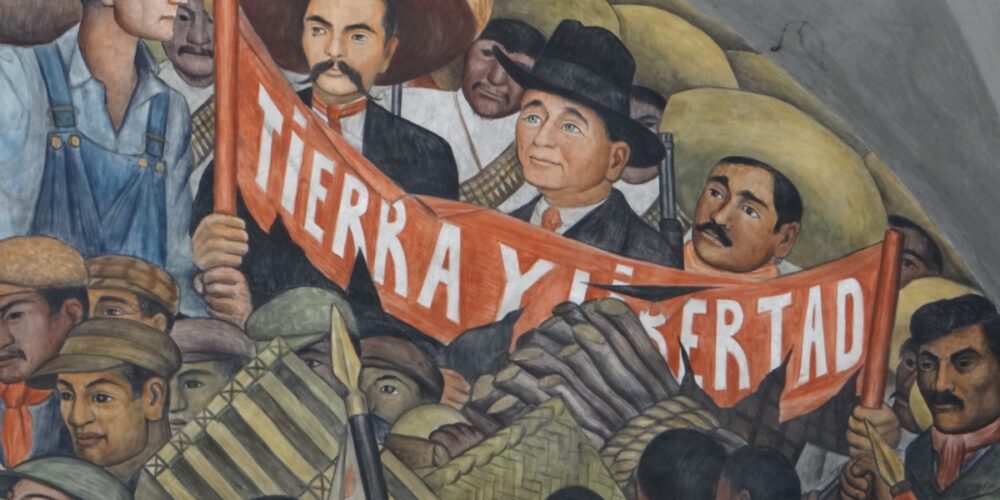Capital accumulation is one outcome of the irrational motor that drives our economic system. This is no less true for the agricultural sector than it is for industry. As capitalist production advances over time we witness a greater and greater accumulation of capital in fewer and fewer hands.
Let’s consider land, for example. Marx discusses terre-capital, or “earth capital,” as land that capital has been expended on in some manner for the purpose of acting as part of the means of production:
Capital may be fixed in the land, incorporated in it either in a transitory manner, as through improvements of a chemical nature, fertilisation, etc., or more permanently, as in drainage canals, irrigation works, leveling, farm buildings, etc. Elsewhere I have called the capital thus applied to land la terre-capital. It belongs to the category of fixed capital.
see reference[1]
Land functions like any other form of fixed capital. With constant use in the absence of investment to maintain it it degrades to the point of uselessness. Thinking of land as a form of fixed capital, we can see how land has followed the general pattern of capital consolidation, as seen in fig. 1, which shows the general decline in the number of farms in the 26 Counties.

Source: CSO, 1860–1980, Farming since the famine. 2013–2016 and FSA01: Number of Farms by Farm Size, Region and Year.
The amount of arable land in use for crops and pasture has fluctuated since records began, in 1850, between approximately 5 and 4 million hectares, with the figures for 2013 best approximating the older data, with 4.9 million hectares of agricultural land in use.[2] We can correctly infer that the decrease in farm numbers has little to do with a decrease in farming; instead it represents a tendency for the inner logic of capitalist production to consolidate capital in the hands of fewer and fewer actors.
Some larger farmers reading this might be unconcerned about the fate of their smaller neighbours. After all, if you own a large farm you are in a better position to avail of economies of scale. Fixed costs, such as machinery and buildings, are cheaper per unit of output with large-scale production, giving them a competitive edge over their compatriots. Yet farming isn’t a national affair, and even the most secure farmer would do well to consider recent history and reflect on the current trajectory for agriculture within the EU. If this persists, it is unlikely that even the most efficient Irish farms will be able to compete with large German, French and Polish competitors organising agriculture on an industrial scale.
With a consolidation of fixed capital—dead labour, in Marx’s terms—there tends to be at the same time a decrease in variable capital, or living labour. This can be clearly seen in figs. 2 and 3, which demonstrate the decline in farm labour since 1912.

Source: CSO, “Farming since the Famine, 1847–1996.”
The family has tended to be the main social unit for agricultural production, even as far back as 1912, when 70 per cent of all labour was done by the family. As time has progressed, the portion of agricultural labour done by the family has only increased, to the point where in 2016 almost 94 per cent of all farm labour is carried out by the family.

Source: Compiled from CSO Statistical Yearbooks and Farm Structure Surveys
It should be noted that the sudden increase in total labour hours observed from 1984 onwards stems in part from the novel idea that women’s agricultural labour should be recorded. The two data sources are not exactly commensurable, but they both point towards the same conclusion. As time passes, technology develops, capital consolidation occurs, and fewer and fewer hours of living labour are required in the process of production.
In a rational economic system this would be an excellent outcome. After all, who wouldn’t like to work less?
Unfortunately we know that the efficiencies associated with capital accumulation and technological improvement benefit neither the farmer nor the worker under capitalism. The farmer faces the choice of either drinking from the poisoned chalice of productivity bought with debt or deciding to become uncompetitive and ultimately reliant on subsidies (and the good graces of technocrats in the EU) for the greater part of their income.
As always, we must ask who benefits from the consolidation that occurs under the existing economic system. Is it the farmer, who must work harder and adopt the risks and costs of acquiring more fixed capital in the form of land and machinery to remain competitive? No, it is the factory-owner, the mill and the bank that profit from the farmer’s increased productivity.
There is nothing mystical or natural about how our economic system works: it adheres to general laws of development, which have held true for hundreds of years. The conclusions one arrives at from understanding them are not pleasant for the majority of farmers or citizens.
The famous Mexican revolutionary Emiliano Zapata had a well-known saying, La tierra es de quien la trabaja [The land belongs to those who work it]. While the Irish farmer may overwhelmingly own their own land, the surpluses that they produce are ultimately claimed by the factory-owners and the banks. It is in all our interests to have an agricultural sector that remunerates those who labour in the fields, as well as the factories and offices, to the full extent of their labour.
References
- Karl Marx, Capital, vol. 3 (1894), Marxists.org (https://tinyurl.com/y2eay5jt).
- Teagasc, Agriculture in Ireland (2017) (https://tinyurl.com/y6ptrjcq).






